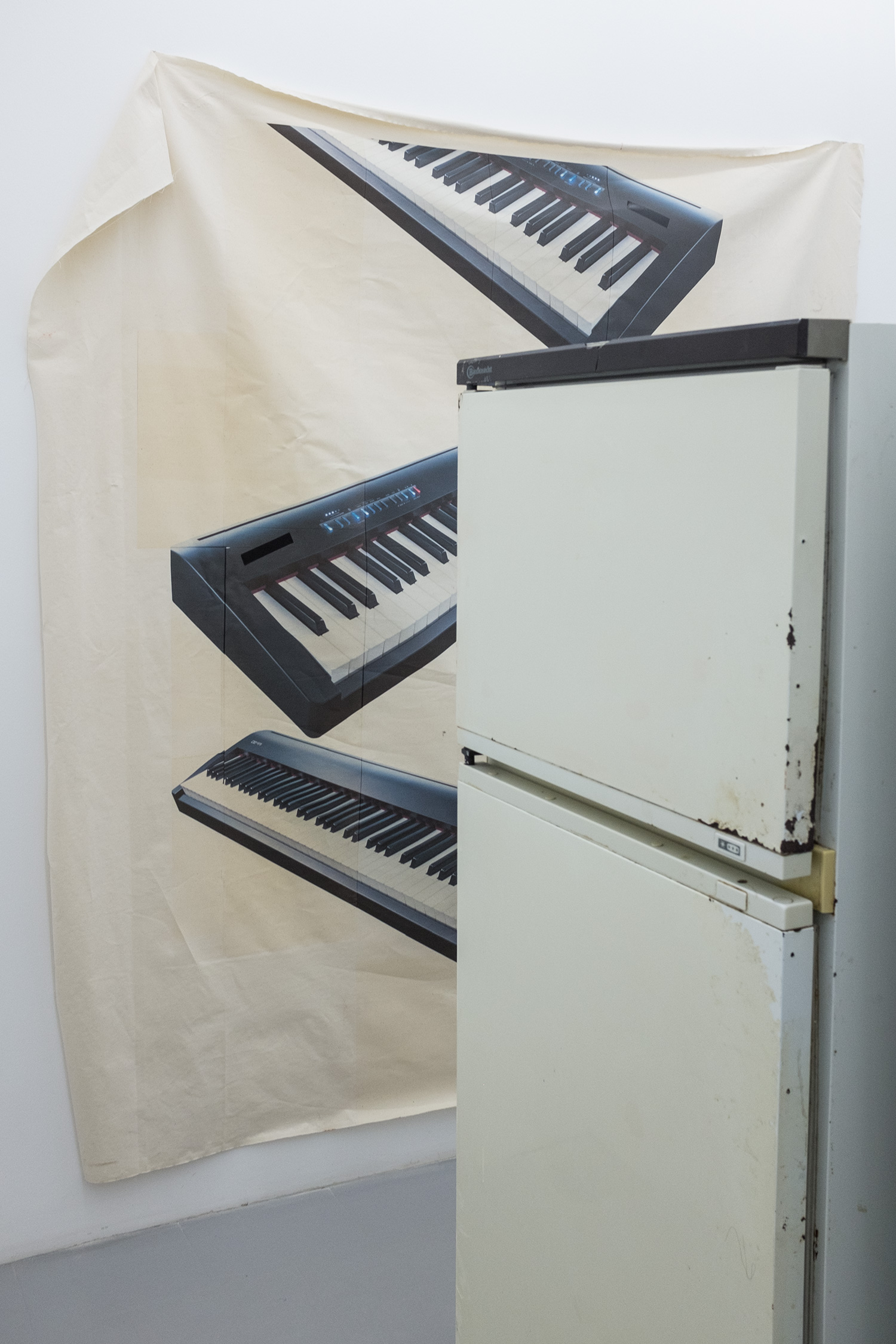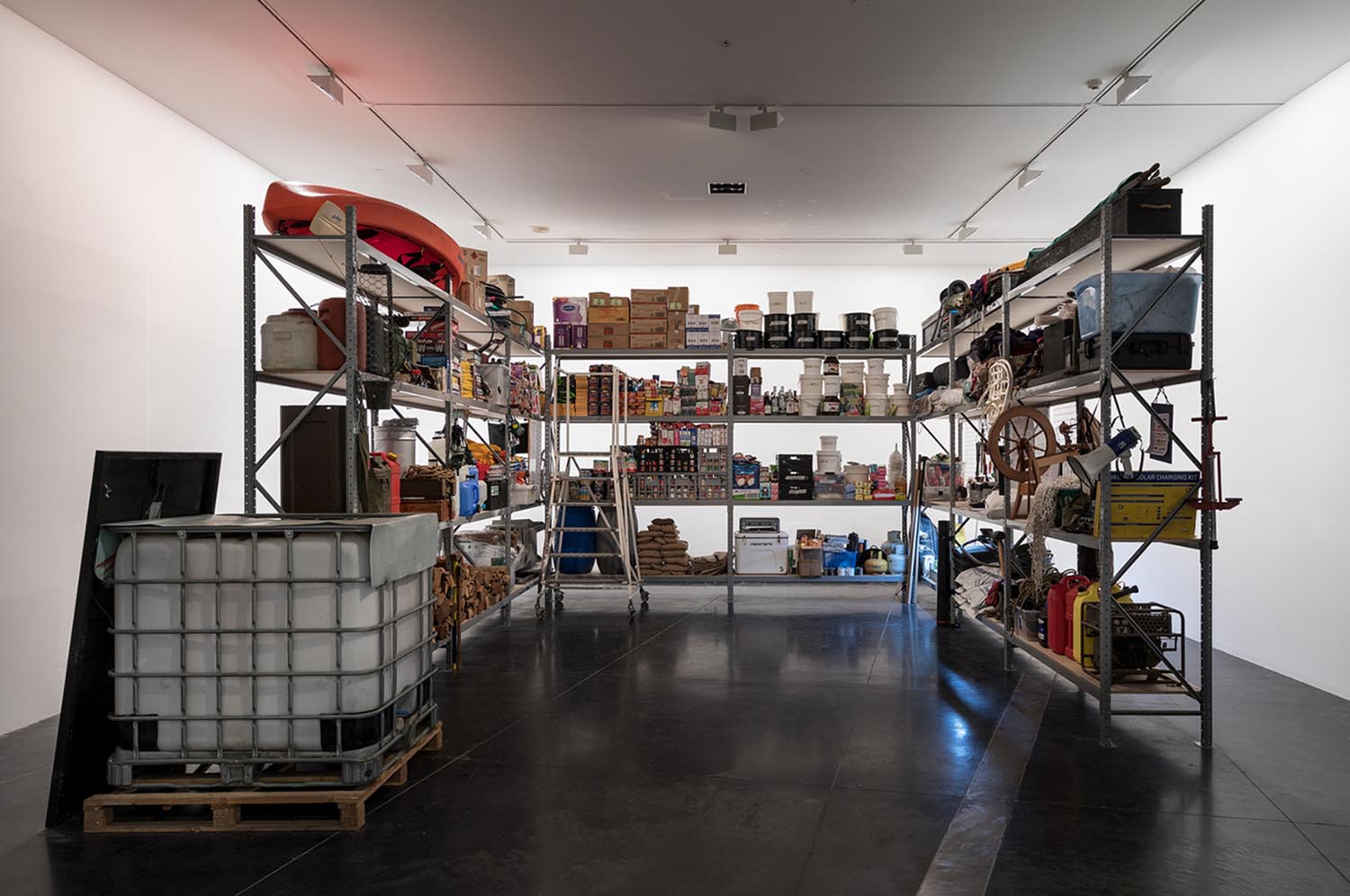What is Anna Karenina? A depiction of a Freudian woman? A complex, realist work of fiction that excites the imagination? Tobias Kaspar sculpts a manifold portrait of Anna Karenina in his solo show at the kim? Contemporary Art Centre.
At first, the exhibition seems to be about about everything but her. An old pair of boots suggesting a nineteenth-century worker’s footwear, filled with bronze and cut into two pieces, meets the visitor at the entrance. A pile of clothes hangs over a chair back. Bottles, coffee cups, discarded wrappers and other small, insignificant objects are strewn on a rug on the floor. A refrigerator is partially encased in flowers. These and other objects, amid wall works and signage, create a curious spatial world. The photographs on the walls attract particular attention. Shot in Riga and Rome, they depict empty tennis courts, accompanied by random associative sentences taken up from the novel and written in three languages — Latvian, English and Russian. For example: “We have two women always specially kept for washing small things, and the clothes are all done with a machine” and “All the surplus value is taken away by the capitalists.”
Here Anna Karenina is about our obsession with the organization of commodities — about wearing, being, associating, belonging to a certain symbiosis of goods. And that is exactly what the nineteenth century has in common with the twenty-first century. These are objects that we can carry with us wherever we go; they don’t belong to a particular place, but makes us feel connected to a certain world. The dialogue and subtle resonance presented by Kaspar’s work through the aloofness of objects delivers an almost cinematographic presence, similar to the one that Tolstoy captured as well. Yet it also keeps the viewer wondering whether a hidden critique is embedded within — or is it just a form of affirmation?



